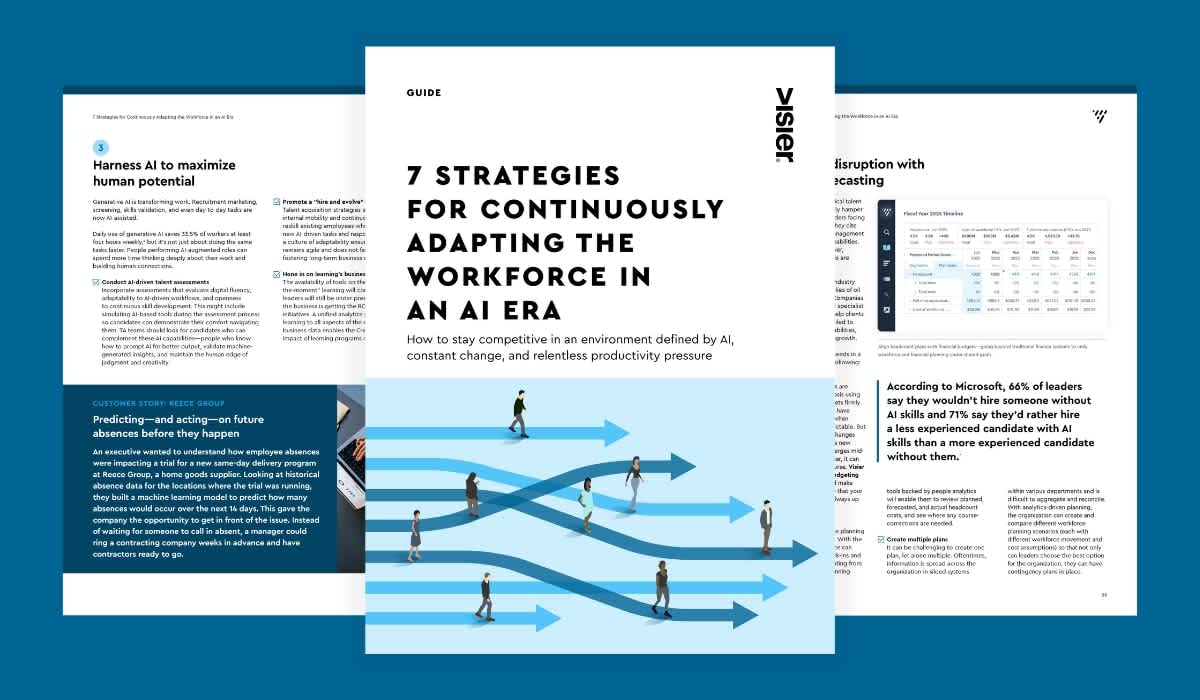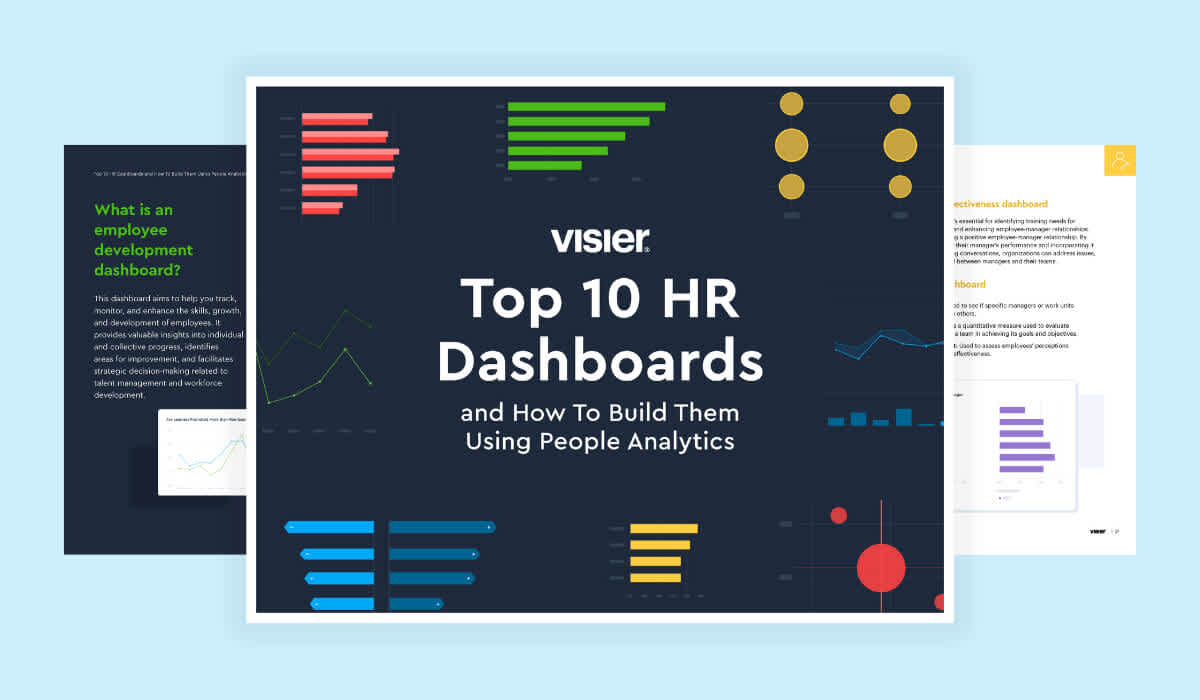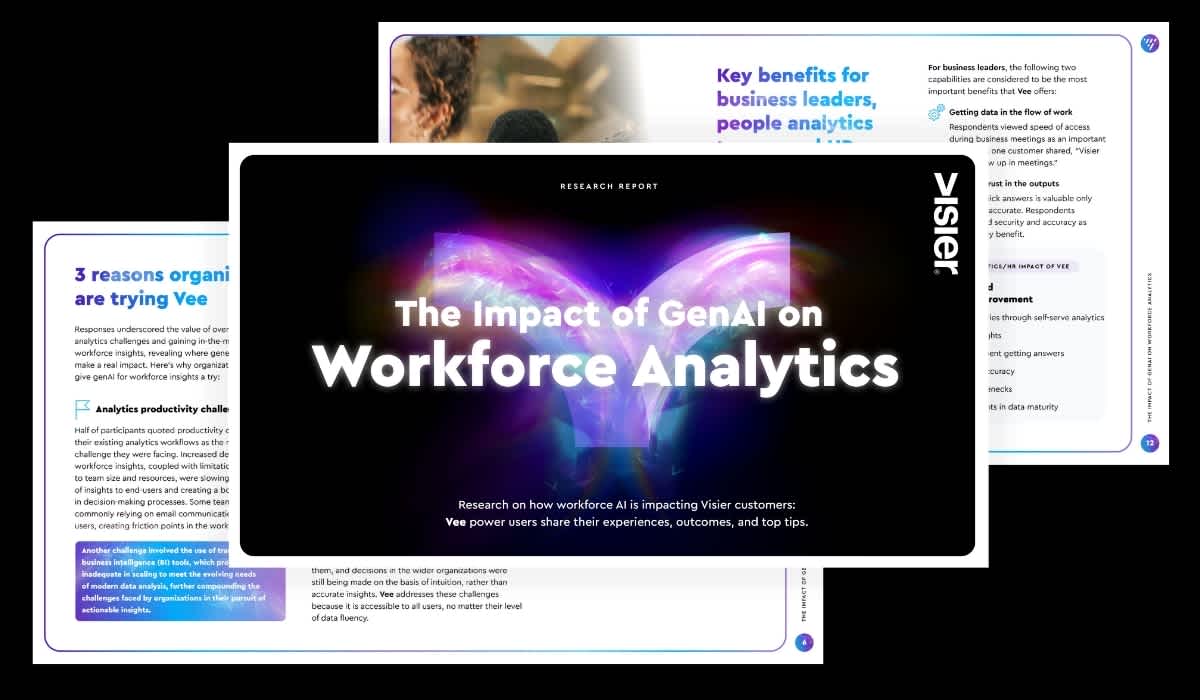From Analytics to Action: Strategic Workforce Planning in the AI Era
Strategic workforce planning is critical in finding and retaining the right talent and skills to support an organization's short- and long-term goals. Read more to learn what it is and how to do it.

Today’s business leaders are constantly asked to make strategic decisions in an evolving and disruptive business environment. AI has reshaped roles faster than job descriptions can be updated. The economic landscape is changing daily, and generational shifts are impacting the labor market.
To build the organizational resilience and agility necessary to respond to external changes, companies are finding that strategic workforce planning can’t be a once-a-year initiative. It’s now a continuous, business-critical capability.
It can be tough, though, to move forward when we find ourselves putting out fires and being more responsive than proactive about our workforce needs. Here, we take a look at how you can move from theory to action by leveraging AI and adopting a new workforce planning approach that delivers real results.
![[VIDEO] Kelli Klindworth WFP](https://images.ctfassets.net/lbgy40h4xfb7/1StyvXHUmDI2uyQ59KjtUr/5534af1eb0db23e930599ed69a0eb204/workforce-planning-kelli-klindworth.jpg?w=1600&h=895&fl=progressive&q=50&fm=jpg)
What is workforce planning?
Workforce planning is a process that involves analyzing and forecasting short- and long-term organizational needs, and mapping skills and talent management requirements to ensure that the company has the right people in the right places, when they’re needed.
Strategic workforce planning looks beyond the immediate needs in terms of skills and headcount. It takes into account long-term goals, the business strategy, and the evolution of the market, and tries to find those skills and capabilities you’ll need in the future. Workforce planning includes both external hiring and internal mobility to help you not only find the best talent but also retain it.
Strategic workforce planning requires asking critical questions:
Do we have the right people? Not just people, but people with skills that match our future.
How many people do we actually need? Not a wish list or a number based on current staffing levels and budget availability, but a number based on real data that aligns people with outcomes.
What investment will we need to make to close critical workforce gaps? This will include the costs of reskilling, upskilling, and talent acquisition.
It’s critical in this process that workforce planning is designed to address and meet business needs today and into the foreseeable future.

Strategic workforce planning benefits
Attracting and retaining top talent are two major benefits of strategic workforce planning. But those aren’t the only ways it can assist you.
The main benefits of strategic workforce planning include:
Finding and addressing skill gaps. Working towards your business goals requires certain skills from your employees. Strategic workforce planning helps you see what the current skills are in your company, discover what your future needs will be, and address the gaps.
Preparing for difficult-to-foresee scenarios. Strategic workforce planning looks beyond the current headcount. It takes into consideration business goals, the current market, the competition, and more. By doing that, you can create plans to address various risks and find ways to mitigate them.
Improved engagement. When people feel valued and know they have true opportunities for growth, they are more engaged and perform better. Strategic workforce planning doesn’t directly address engagement. But by having the right people in the right place and using their best skills, you can give them the opportunities they crave and help them become more productive.
Saving costs. The hiring process can be costly, and replacing an employee who has left can compound those costs even more. By knowing the skills you have in your current workforce and your future needs, you’re better equipped to make a decision about whether to backfill a role with a new hire or promote internally. You can also increase your offer acceptance rate and create a more effective onboarding process so that you can save costs long term.
Transitioning from theory to practice: putting analytics to work
Workforce data is nothing new. Organizations have long had data on hand about their employees—a lot of it, in fact. Modern workforce planning is focused on mining the data for business analytics that can help drive strategic and aligned workforce decisions.
Using workforce analytics can bridge the gap between theoretical planning and practical implementation. The goal is to empower people managers to make informed planning decisions based on data-driven insights.
Headcount analysis is part of a foundational planning activity. Unfortunately, that analysis has not historically been approached in a strategic or data-driven way. For instance, many organizations have been:
Relying on generic retirement age data instead of actual retirement patterns.
Relying on dated benchmarks.
Approaching headcount budgets without a data-driven connection to historical trends.
Taking action based on gut feelings or hunches.
Instead, companies can approach the process in a more thoughtful, results-driven way, asking questions like, “Are we in the right regions in terms of labor cost and productivity?” The answers to these questions can drive new talent distribution strategies designed to leverage human capital efficiently.
Data-driven planning supports better forecasting and decision-making. It’s important for HR leaders to proactively partner with business leaders to guide them in using data to demonstrate the value of their workforce while planning to address future needs and potential shortfalls.
The imperative for agility and adaptability in the AI era
Your employees are aware of the changing landscape and how they and their jobs are being impacted. In fact, 61% are concerned that their current skills may be replaced by AI at some point in the not-too-distant future.
They’re not wrong to be concerned. Employers and HR leaders are, too. The skills landscape is shifting so rapidly that what was mission-critical just a few months ago is often being automated today. New skills are emerging that employees have yet to be prepared for or trained in. That kind of volatility illustrates the importance of agility and adaptability in strategic workforce planning. Planning today needs to be:
Dynamic and continuous. The changes impacting businesses today aren’t happening annually; they’re happening constantly. Your planning has to be designed to respect these changes quickly.
Skills- rather than job-focused. The jobs of today may very well not exist tomorrow. Some, but not all, skills may, though. Titles don’t provide insights into what employees actually do. Skills do.
Scenario-ready. There’s not a straight-line path forward for businesses today. Planning needs to consider various potential outcomes or scenarios.
Fortunately, despite a rapidly evolving landscape, today’s businesses are also supported by advanced technology, like AI, to help them both plan and implement their workforce strategies.
Enhancing workforce productivity through strategic planning
Strategic workforce planning isn’t just about the number of people an organization needs to hire. It’s also about ensuring that the existing workforce can impact productivity and output as efficiently as possible.
C-suite leaders aren’t interested in workforce planning as an academic exercise. They’re looking for results. Effective strategic workforce planning needs to be directly connected to productivity outcomes by:
Getting the right skill mix to maximize output.
Anticipating gaps before they hurt performance.
Building team structures that support business goals.
Putting resources where they’ll create the most value.
By aligning strategic workforce planning with organizational needs, organizations can realize the power of strategic planning to help them move forward while also being responsive to continuous environmental change. Implementing continuous learning and development initiatives to maintain a competitive edge is a must-do for organizations of all kinds.

Best practices for effective strategic workforce planning
To effectively put strategic workforce planning to work for you, it’s important to:
Leverage data-driven insights to forecast future talent needs and potential gaps.
Align workforce planning with your overall business strategy and goals to ensure maximum productivity and effectiveness.
Regularly review and adjust your plans to remain responsive to market and technological changes.
The bottom line
Strategic workforce planning isn't just about having enough people. It's about having the right people with the right skills at exactly the right time. In a business environment transformed by AI and automation, this capability separates organizations that merely survive from those that thrive.
By embracing strategic workforce planning, organizations can effectively translate analytics into actionable strategies, fostering agility and enhancing productivity in the AI era.
Strategic workforce planning FAQs
What distinguishes strategic workforce planning from operational workforce planning?
Strategic workforce planning focuses on the long-term alignment of workforce capabilities with business goals, while operational planning addresses short-term staffing needs.
What role does data analytics play in workforce planning?
Data analytics provide insights into current workforce capabilities, predict future needs, and inform decision-making processes. source
How can organizations ensure the effective implementation of workforce planning strategies?
Through continuous monitoring, involving key stakeholders, and integrating workforce planning into the broader business strategy.

Read more about strategic workforce planning
Dr. Kelli Klindtworth, Visier's lead workforce planning expert, shares her thoughts on practical steps to start workforce planning today, leveraging internal capabilities, fostering collaboration, and prioritizing progress over perfection.
Visier's genAI assistant Vee answers strategic workforce planning questions in seconds. Here are 10 real examples.
Agile workforce planning practices enable organizations to minimize risk and capitalize on upside opportunities.


